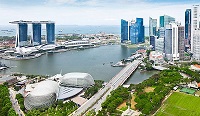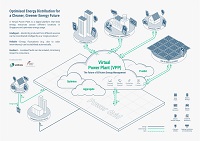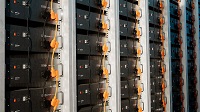Speeches
06 Mar 2012
Ms Judith Slater, Deputy High Commissioner, British High Commission,
Distinguished Guests,
Ladies and Gentlemen
- Good morning and a warm welcome to all of you. I would like to thank the British High Commission and the Energy Studies Institute (ESI) for inviting me to speak at today’s seminar on electric vehicles.
- Against a backdrop of volatile oil prices and the need to address climate change, electric vehicles, or EVs, present a viable green transportation solution. They tend to be more efficient than their internal combustion engine equivalents(1) and result in less carbon emissions if they consume electricity from clean energy sources. They also enable diversification away from oil, the main fuel for the transport sector.
- At present, EVs are still some distance away from becoming a mainstream feature of the transport system. For this to happen, consumer acceptance is key. A number of global surveys have been commissioned by firms such as IBM, Deloitte and Accenture, to gauge consumer readiness to adopting EV technology.
- The results of these consumer surveys indicate that consumers globally share similar concerns with regards to price, vehicle range and long re-charging times.
- Interestingly, these surveys reported that there is a mismatch between what consumers need and what they expect. For example, Deloitte reported that although more than 80% of their survey respondents drive less than 80km per day, most of them preferred a vehicle range of more than 200km. Through better education about EVs and their capabilities, as well as technological progress in charging solutions, some of these consumer concerns can be addressed in time. This will be important in determining greater market acceptance for EVs.
- Globally, many countries and cities are embarking on EV programmes to test out different vehicle types, consumer segments and charging technologies. These EV programmes are important for encouraging greater consumer acceptance. They also bring together key stakeholders in the EV ecosystem to understand what needs to be done at the system level.
- In 2009, the UK government launched a nationwide trial of environmentally friendly vehicles(2). The £25 million scheme enabled drivers to take part in trials of different types of EVs, ranging from electric Minis and Smart city cars to sports cars and electric vans. A major component of this trial called Coventry and Birmingham Low Emission Demonstrators, or CABLED, was concluded recently. I understand that Mr Neil Butcher from Arup, who oversaw the CABLED project, is here with us today to share his insights from the project.
- Other trials focus on new charging technologies such as battery swapping or inductive wireless charging to overcome the issue of long charging times. Over time, there will be more information on which form of charging technology will be more acceptable to consumers while also being commercially viable.
- In tandem, auto manufacturers are rolling out EVs for both testing and commercial sales. They are working with technology providers to conduct R&D on EV performance and EV-related solutions, such as charging stations, analytics and better storage solutions.
- Grid operators also have a role to play in the EV ecosystem, to understand the impact of EVs on the power grid. Last week, Singapore Power announced a technical trial to understand the impact of EVs on the electricity network, and develop solutions so as to continue the reliable delivery of power supply to consumers.
- These strong partnerships between governments, car manufacturers, charging service providers, grid operators and consumers, will be key to driving continued innovations in the EV landscape.
- To prepare for a future when EVs could become more pervasive, we have embarked on a test-bed, to evaluate the feasibility of using EVs in Singapore and to gain a better understanding of EV technologies, business models and user preferences.
- In many respects, Singapore appears to be an ideal location for EVs, given our small size, compact urban environment, robust power grid, advanced Information and Communication Technology (ICT) infrastructure and well-developed
R&D capabilities. The average daily driving distance for a typical vehicle here is less than 55 km a day, well within the typical driving range of a fully-charged EV between 90 km to 160km. - In addition, Singapore has a wealth of technology and research expertise in electronics, power and precision engineering. Our test-bed is part of developing Singapore as a “living laboratory” for companies to research, develop and test innovative solutions that can serve a wider market.
- Since the EV Task Force, which is co-led by the Energy Market Authority and the Land Transport Authority, launched our test-bed in mid-2011, we have seen steady growth in participation.
- We now have 25 EVs on the road, up from 9 when we first started. We expect more participants to sign up this year. The network of EV charging stations is also growing, with 19 normal charging stations rolled out. In addition, Singapore’s first quick charging station was launched at the end of last year and is located at the BCA Academy in Braddell in the central part of Singapore.
- Companies that participate in the EV test-bed can choose from four vehicle types – the Daimler smart electric drive (ed), Mitsubishi i-MiEV, Nissan Leaf and Renault Fluence Z.E. Participants can benefit from tax incentives under the TIDES-PLUS scheme, which waives all vehicular taxes. The test-bed provides valuable data relating to the performance of EVs in Singapore, including the driving range between charging, ease of charging, annual mileage and total cost of operation.
- The EV Task Force is also working with the Energy Studies Institute (ESI) to conduct an analysis on the benefits and costs of EVs, with results collected from the test-bed. This will further deepen our understanding of the impact that EVs can have on our national transport system in future.
- In conclusion, the global EV landscape is a dynamic and evolving one. Governments, auto manufacturers, technology providers and end-users must collaborate to test innovative new ideas and find out what works best in their context.
- With EV pilots and programmes being implemented in various cities worldwide, it is also important that we share our experiences and learning points with one another, through platforms such as today’s seminar. We look forward to hearing from the various distinguished speakers who will discuss various aspects of the EV landscape. I wish you all a fruitful discussion and a successful seminar.
- Thank you.
Introduction
The Dynamic Global EV Ecosystem
Singapore as an Ideal Location for EV Test-Bedding
Updates on the Singapore EV Test-bed
Conclusion















